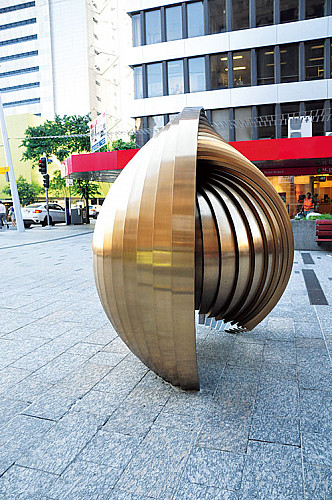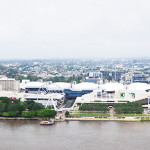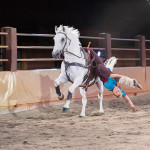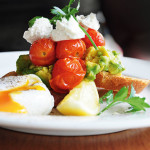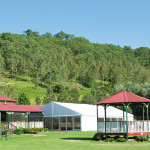Why Every Art Lover Should Head To Brisbane
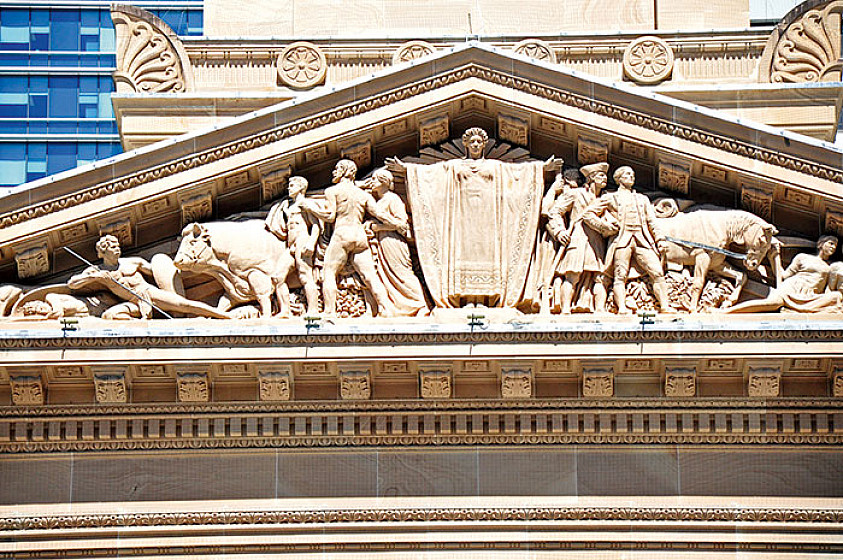
I am standing in front of the symmetrical silhouette of Brisbane City Hall, a heritage-listed building in the Italian Renaissance style, in King George Square, in the Australian east-coast city of Brisbane. Built in 1930, the building reopened after renovations only in 2013. What I find interesting is that the finely-etched frontal relief, Progress of Civilisation, has been created by artist Daphne Mayo in 1927-30 at a time when women were rarely awarded public commissions. Ironically, the relief at the gentlemen’s club, Tattersall’s Club, in the main shopping area, the Queen Street Mall, is also her work. The magnificent square also boasts a statue of King George V, bronze sculptures of lions modelled on those in Trafalgar Square, London and the Petrie Tableau, designed by sculptor Stephen Walker and based on the life of this pioneering Brisbane family.
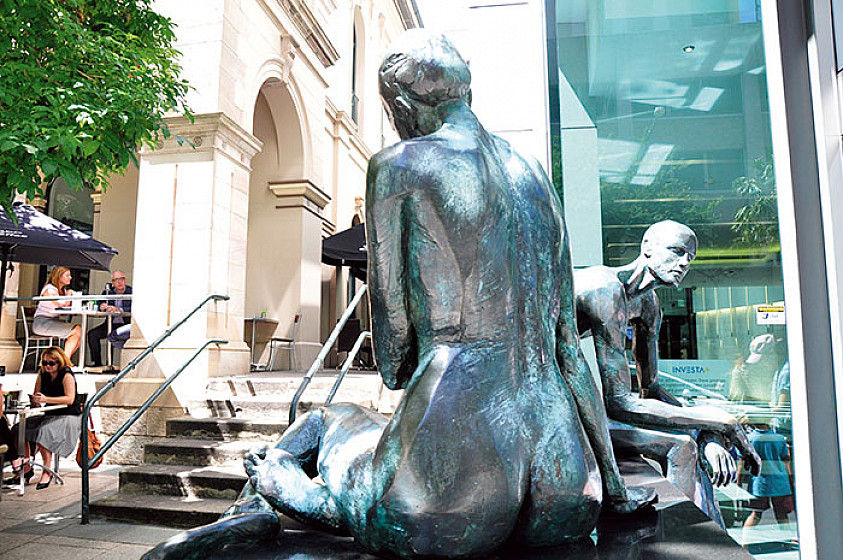
I am discovering that Brisbane is a city of public art. Whether it is architecture, historic art works or street sculpture, an eclectic mix of art can be discovered all over the city and suburbs. I notice that the electricity boxes on the streets have been painted over with figures and scenes. The parks are dotted with pieces like the Man and Matter series in Kangaroo Point Park or the arresting oeuvres in the City Botanic Gardens. Streets surprise with sculptures on unexpected corners or those that are boldly centred like Steam, 15 geodesic spheres that dot George Street. Queen Street has its strategically placed Sphere which reflects pedestrians walking by or, further down, Dialogue which features a nude man and woman sitting in conversation by the wayside.
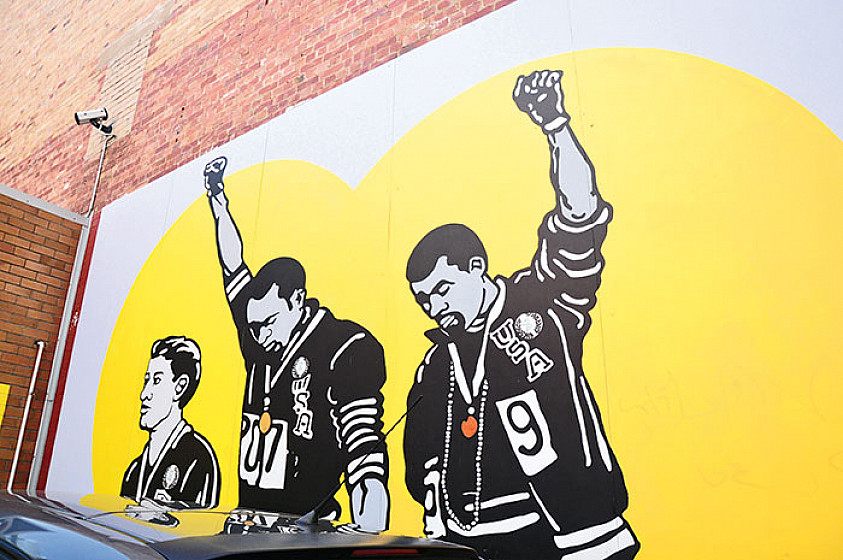
I turn into the tiny Burnett Lane to view some fine examples of street art. Named after Charles Burnett, an early surveyor of Brisbane, this is where the first official buildings to do with the penal colony that was Brisbane’s very beginning were located. The chief warder, the senior constable and the superintendent of the convicts, lived here. Perhaps in an effort to lighten up this dark history, an imprint work, a trellis of flowers and leaves in fluorescent paint, evoking the changing seasons, by artist Elizabeth Woods, is embedded in the road. One of the walls, the Green Wall, depicts nature in a work by Simon Suckling. On the opposite wall, are two stark political paintings by Richard Bell and Emory Douglas.
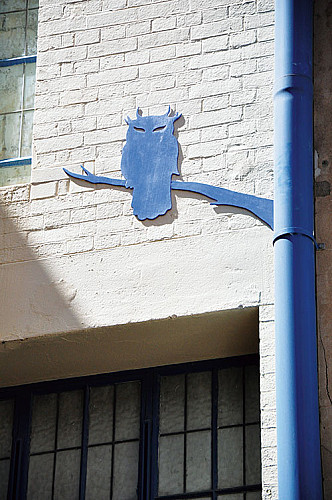
These works have been created as part of the BCC’s (Brisbane City Council) revitalisation of the CBD lane-ways. However, I notice a series of animal cut-outs on yet another wall and am related the heartening story of the ‘Blue Art Ninja’ who places these strategically and decoratively on public walls, in the stealth of night. He has been accorded this name by denizens, who do not know him or who he is but have come to love his work which appears at heights that only a ninja would logically be able to scale. He never advertises where he will strike and there are those who whisper that he dons a ninja outfit while on his embellishment spree.
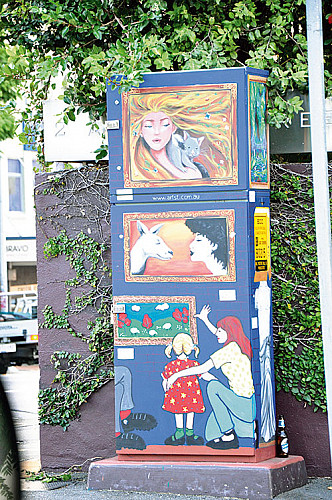
In an effort to create great artwork to enliven and enhance public spaces, for more than a decade, the BCC has partnered with the private sector to promote public art within new developments through the Per Cent for Art scheme. The artwork is thus linked to or integrated into the actual building or located in the foyer, façade or lane-way. In the Queen Street Mall, dotted with contemporary street sculptures, is located the Rhythm of Life store façade. Designed by Melbourne architects, Studio 54, the lighting has been fashioned by Bruce Ramos, who designs shows for heavyweights like U2 and David Bowie, with 24,000 LED lights being incorporated into a flora and fauna motif design which is particularly striking at night.
A short walk away, I enter the cool precincts of the chapel of the Cathedral of St Stephen, built in 1870. Walking in, right towards the back, behind a beautiful wooden screen, almost hidden from all eyes, is the sculpture depicting Australia’s only saint, Saint Mary MacKillop. Made of camphor laurel wood by John Elliot, this rustic-looking figure manages to convey a certain earthiness, simplicity and total lack of worldliness. A fitting tribute indeed!
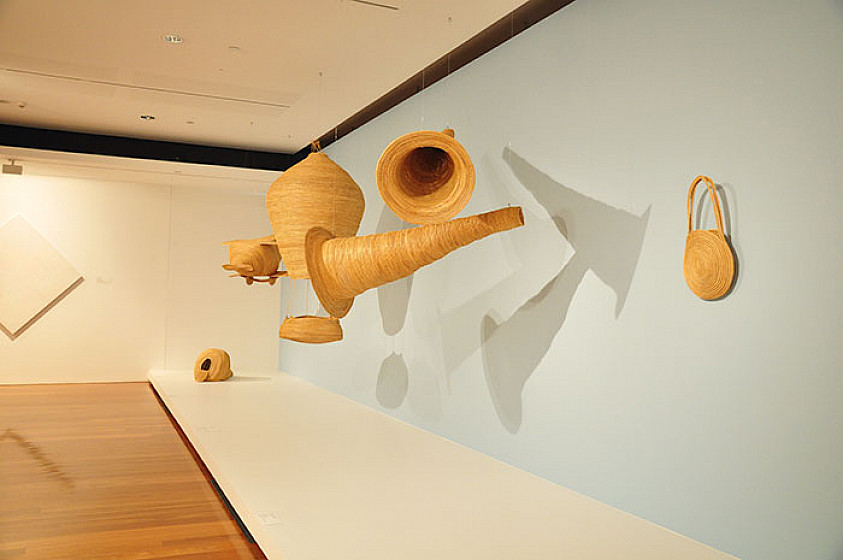
South Bank Parklands, formerly the centre of the city and today the amusement and cultural area, features Australia’s only man-made inner-city beach where locals swim and picnic. Site of the former World Expo 88, a stunning remnant is the Nepalese pavilion, the Peace Pagoda, fashioned of intricately carved wood. Stroll through the lush subtropical Parklands, duck under the one-kilometre trail of the bougainvillea-lined arbour, take a turn on the Wheel of Brisbane and walk onwards to the city’s cultural precinct. The Queensland Performing Arts Centre (QPAC), Queensland Museum and Sciencentre, and Queensland Gallery of Modern Art (GOMA) are all waiting to be discovered. Behind GOMA, as I circumvent hordes of schoolchildren on the lawns, I pause to wonder at New Zealand sculptor Michael Parekowhai’s sculpture, The World Turns. Known for his sense of humour, the sculptor uses pop culture as well as the history of location in his pieces. Look at the work closely and notice a little mouse on the ground, going diligently about its own business, even though the elephant is on its head…. Having tasted some of the works of art that this city has to offer, I feel close to turning onto my head myself! With happiness, of course!
Related posts from Verve:
Verve Trending
Sorry. No data so far.
us on Facebook to stay updated with the latest trends

